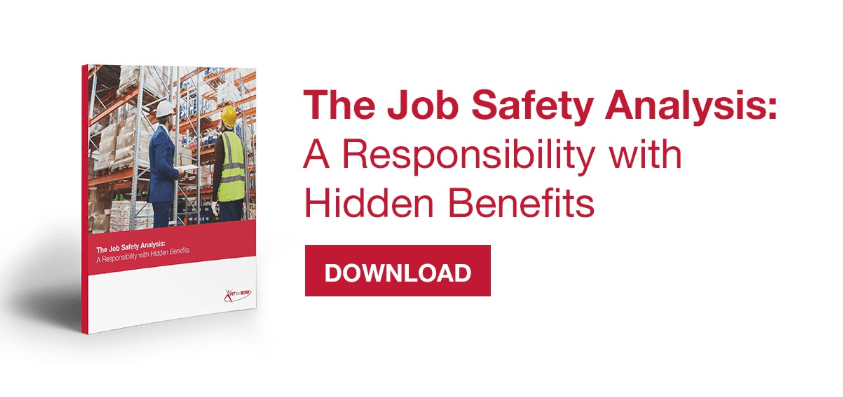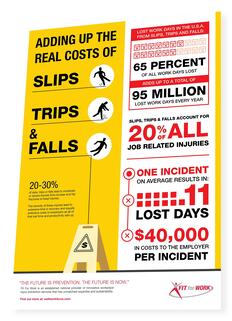Throughout the last couple posts, we’ve gone into detail about the concept of workers’ compensation and its importance in protecting both employees and employers – but there’s another aspect in play that also needs to be taken into consideration: employer liability insurance.
Here’s a breakdown of how liability relates to workers’ comp and how to go about reducing the threat presented by both against your employees and your business.
The two sides of workers’ comp
Workers’ compensation ultimately has two key components – the policy itself and employer liability insurance.
Part one – The workers’ compensation policy
Employers are legally obligated to assure their workplaces are safe. That’s the backbone of workers’ comp. While certain subtleties vary from state to state, the overarching idea is the same across the board: if an injury occurs on the job, the medical expenses are paid for and treatment is given via support from the policy.
It’s a no-fault system, meaning workers’ comp will kick in no matter who was at fault in the injury. As long as it occurred on the job, it will be covered. Workers’ comp is designed to assure workers get care and compensation and employers are protected from lawsuits – because despite having their medical bills paid for, the employee may still sue. That’s where part two becomes critical.
Part two – Employer liability insurance
If it can be proven that the injury occurred either because the employer was being negligent or took intentional action that put the employee in danger, a lawsuit may be on the table. Liability insurance can pay for the legal expenses of such a case, including attorney fees and court costs. It’s designed to help your business survive the lawsuit and to continue operating profitably.
If a lawsuit is brought forth following an injury on the job, it’s often claimed that either negligence or intentional tort took place.
Negligence
Negligence in the workplace is an area of law wherein the employer is held responsible for the employee’s actions that caused injury to the employee and/or to others. Negligence in such a case can take several forms:
- Negligent hiring – An employee is hired despite lacking the necessary training, credentials, or experience required to adequately perform in their role .
- Negligent training – Incomplete training after hiring compromises worker safety. Employers and employees need to understand what’s needed to safely function within a given role.
- Negligence can also be claimed due to a lack of maintenance on a piece of equipment or if any other proper measures were not put in place to ensure the safety of the employee.
Intentional tort
Negligence is usually claimed when something could have been done to prevent an injury. Intentional tort is a bit more direct than that. It occurs when an action was taken that it could be argued served to put the employee directly in harm’s way.
One example is if an employer were to intentionally remove a safeguard from a machine to speed up productivity without concern of the hazardous impact it may have on the employees’ safety.
There are three key factors involved in intentional tort, which we’ll tie into the above example for reference:
- Intent – The employer intentionally removed the safeguard to speed up production.
- Acting – The removal of the safeguard was not merely planned, but was followed through with.
- Actual cause – The injuries to the employee only occurred specifically due to the safeguard being removed.
If either negligence or intentional tort can be proven against your company in the event of an injury, you will be in for some costly legal action. Fortunately, there are steps you can take to avoid these risks – and it all starts at the root of the problem.
Avoiding legal headaches by preventing injuries
Fit For Work understands the threat injuries and lawsuits present for your business – both financially and toward your reputation. The best way to avoid these threats is to prevent injuries from happening in the first place.
If employees are safe and proactive steps are taken to mitigate the causes of injury on the job, workers’ compensation and liability insurance won’t have to come into play. In preventing injuries in the workplace, we utilize four key areas:
- Onsite Early Intervention – We provide proactive one-on-one interaction with your employees to create personalized solutions designed for their unique roles and habits.
- Ergonomics – We ensure employees are performing their jobs in the right way to avoid injury and to ultimately experience success.
- Pre- and post-offer employee testing – This works to actively combat negligent hiring and training by ensuring your employees are fit to perform tasks at an effective and highly knowledgeable level.
- Compliance – If an injury occurs and your work environment is not compliant with current safety regulations, you’re at risk of a lawsuit. We exercise our expertise to make sure everything is in line with OSHA , the DOT, and the EPA.
Taking steps to promote safety and injury prevention not only reduces costs linked to workers’ comp and legal headaches, but it also improves employee morale and the overall ability of your company to attract and retain high-quality workers .
Contact Fit For Work today to start implementing a safety strategy proven to reduce injuries and associated costs by 50 percent.





